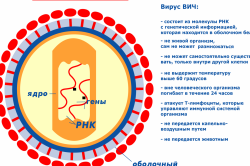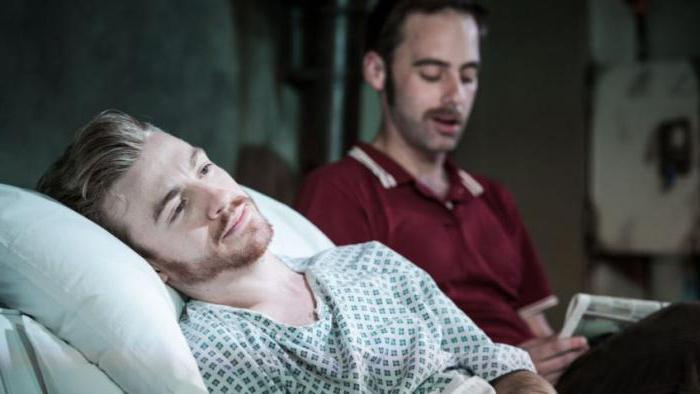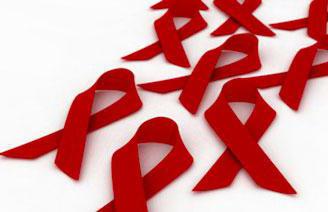Is it possible to treat AIDS at home and how to do it? HIV - can it be treated in the early stages? Is HIV completely curable?
AIDS is not an independent disease. This is acquired immunodeficiency syndrome, which is caused by HIV. It manifests itself in various diseases that can lead to death. The causative agent of AIDS infects white blood cells, which provokes a decrease in the protective forces of the immune system. The body can no longer fully protect itself from infections and bacteria. Even the smallest virus from which immunity healthy person can get rid of quickly and easily, and in people with AIDS can lead to death. According to recent studies, in Russia the number of people infected with the immunodeficiency virus has reached 1 million 6 thousand 388 patients.

Some scientists claim that HIV was transmitted to humans from monkeys in the 30s of the 20th century. However, doctors started talking about it only in the 1980s. Since then, scientists have begun searching effective treatment from AIDS. The pathogen, once in the body, may not immediately cause the appearance of the syndrome. It happens that people get sick ten or more years after infection. The routes of transmission of the pathogen are as follows:
- sexual contact with an infected person;
- during blood or plasma transfusion;
- instrumental and injection;
- perinatal from mother to child;
- transplantation for organ and bone marrow transplantation.
The virus can also be transmitted through casual contact, for example, through damaged skin or mucous membranes. An infected mother can infect her baby through feeding breast milk. However, it is worth remembering that the virus is not transmitted through tears, saliva, food or water. Only liquids containing blood impurities can be dangerous.
Most often, infection occurs through sexual contact with a sick person. In men, the immunodeficiency virus is contained in the blood and semen. In women, the pathogen is also present in vaginal discharge. The virus can be transmitted through all types of sexual contact.
A large percentage of those infected are people with drug addiction. They also become infected when using poorly sterilized syringes. Drug addicts often use the same needle to inject substances into several people, so their risk of contracting AIDS is especially high.
Which doctor will help?
The disease is considered fatal, so a person with such a diagnosis must register and undergo qualified treatment in an appropriate institution. The following specialists can help such people:
These specialists know how to treat AIDS and how to prolong the life of a patient with such a diagnosis. At the first appointment, the doctor will carefully listen to all the patient’s complaints. The doctor will also ask for details. personal life, about the number of his sexual partners. After the mandatory examination, the specialist will ask him a few simple clarifying questions:

- How long ago did signs of the disease appear?
- Has the patient ever had casual unprotected sexual intercourse?
- Did he take drugs?
- Was he given a blood transfusion?
- Has he been in contact with someone infected with HIV?
- Did he have any organ transplants?
The survey helps the doctor determine how the patient might have become infected. The diagnosis can be confirmed by an examination, which includes blood, urine, and stool tests. Sometimes doctors may also prescribe instrumental research methods, for example, if complications are suspected.
AIDS treatment is already a reality!
Today, people with immunodeficiency syndrome are provided with qualified assistance and support. However, everyone is concerned about the question of whether AIDS is completely curable. To date, a vaccine that would completely kill the virus and defeat the syndrome has not yet been found. But modern medications allow:
- significantly prolong the life of a patient with such a disappointing diagnosis;
- slow down the development of the disease;
- create artificial immunity.
Therefore, it is very important to seek qualified help in a timely manner. Scientists have developed several effective treatment regimens, thanks to which people with HIV and AIDS can lead a full and healthy life. active life. Antiretroviral drugs used for treatment are constantly being improved and supplemented. Therefore, today it is generally accepted that a person who regularly undergoes treatment can live several decades or more.
Treatment of AIDS is aimed at fighting infections and cancer that arise due to the patient's suppressed immunity. However, it is not able to remove the virus itself from the body. The pathogen inserts its genes into the immune system, causing cells to create copies of themselves.
How AIDS is treated in hospices
Today, special medical institutions have been created in which people with acquired immunodeficiency syndrome are treated. These are hospices where qualified specialists provide assistance to patients with any stage of the disease. Such institutions are created especially for people who need hospitalization and special care.
Some people are interested in how AIDS is treated in hospices. In such institutions, comprehensive care is provided to patients. At hospice, patients can receive completely free of charge:
- consultations with highly qualified immunologists;
- psychological assistance;
- chemoprophylaxis;
- antiretroviral therapy;
- surgical assistance.
In such facilities, one nurse cares for five patients, unlike other hospitals where she must care for about 25 patients. Hospices are provided with all the necessary drugs that help prolong the lives of people with AIDS. The institutions treat both people who have just been diagnosed with HIV and hopeless patients in very serious condition. The latter are provided with 24-hour care.
- Manifestations of HIV infection
- Products to strengthen the immune system
- Lifestyle as a method of combating HIV
Before treating AIDS at home, it is necessary to clearly understand that at the moment effective medicine there is no cure for HIV infection. But this is not a reason to give up, because using recipes traditional medicine, you can reduce the number of viruses in the blood, support the immune system, and partially restore impaired organ functions. At the same time, at home, you can help your body every day using certain methods.
Manifestations of HIV infection
The first mention of the human immunodeficiency virus appeared in the 80s of the last century. HIV infection is a disease characterized by a sluggish course and manifested in a weakened immune system. The last stage of the pathology, in which secondary diseases and tumor processes occur due to decreased immunity, is commonly called “AIDS” (acquired immunodeficiency syndrome).
This terrible pathology cannot be treated and, as a rule, leads to death. At this time, the human body is so weakened that the cause of death can be a simple cold.
 Aware of the dangers of HIV infection, many people are interested in information on how to detect AIDS at home. The main thing here is to know that the infection can long time hide in the human body. In some cases, even special tests are not able to detect the virus. Symptoms of the disease begin to appear only during the destruction of the body.
Aware of the dangers of HIV infection, many people are interested in information on how to detect AIDS at home. The main thing here is to know that the infection can long time hide in the human body. In some cases, even special tests are not able to detect the virus. Symptoms of the disease begin to appear only during the destruction of the body.
Often signs of AIDS include:
- fungal infections of the mucous membranes and lungs;
- prolonged fever with increased body temperature;
- rashes on the skin;
- enlarged lymph nodes;
- general deterioration of health;
- lack of appetite;
- development of Kaposi's sarcoma and much more.
If one or more symptoms occur, each person can be tested for HIV infection by taking a test and undergoing a series of necessary procedures.
It is impossible to get rid of the infection, but it is possible to cure secondary pathologies that develop against the background of HIV infection. Here you will need to use complex methods, which will include the use of drugs that affect the ability of viruses to reproduce, strengthen the immune system and protect the body from possible infection with another infection.
Return to contents
Products to strengthen the immune system
You can prepare medications at home that are highly effective in influencing the immune system. Thus, kvass based on banana peel. To prepare it you will need:

- 3 cups finely chopped banana peel;
- 1 cup granulated sugar;
- 1 tsp. sour cream;
- 3 liters of boiled cool water.
The peel is placed in a glass container and filled with water, sugar and sour cream are added there. The container is covered with gauze and left in a warm place for 14 days. Active release of gases will be a sign that the kvass is ready. It is consumed 4 times a day, 125 ml 30 minutes before meals.
To prepare a new portion of kvass, you can use the old starter: when the container is half empty, add water to it and leave until ready. It is necessary to change the starter when the drink loses its characteristic specific taste.
Calendula is often used to strengthen the immune system. Must be purchased at the pharmacy alcohol tincture calendula, which is taken according to the following scheme:
- in the morning - 2 drops;
- during the day - 1 drop;
- in the evening - 2 drops.
The tincture is consumed for 3 days, then take a break for 1 day. The course of admission is 5 months.
good therapeutic effect Beekeeping products have benefits, but when using them you must completely avoid drinking alcohol. To make a decoction of dead meat and propolis you should take:
- 2 tsp. death;
- 1 tsp. propolis;
- 500 ml water.
 The dead meat is placed in a container, filled with liquid and boiled for 120 minutes. Then the broth is filtered and propolis is added to it. Use the drug 1 tbsp. l. per day after meals.
The dead meat is placed in a container, filled with liquid and boiled for 120 minutes. Then the broth is filtered and propolis is added to it. Use the drug 1 tbsp. l. per day after meals.
Licorice-based products have good anti-inflammatory, antitoxic and wound-healing properties. The substances that make up the plant have versatile biological activity and are widely used in both traditional and folk medicine.
In addition, you can prepare a berry-fruit mixture rich in vitamins and microelements. You will need:
- 500 g each of lingonberries and viburnum;
- 1 kg of green apples;
- 2 cups walnut kernels;
- 2 kg granulated sugar.
First of all, you need to add a little water to the granulated sugar and cook the syrup. Then all the prepared ingredients are poured into syrup and placed in jars. The medicine is taken 1 tbsp. l. a day before breakfast.
Return to contents
Lifestyle as a method of combating HIV
An important therapeutic complex in the fight against HIV infection in general and AIDS in particular is lifestyle changes.
 A person must completely stop drinking alcohol and smoking. This will increase the concentration of vitamins and microelements in the blood, as a result of which the ability of the immune system to resist infection will also increase.
A person must completely stop drinking alcohol and smoking. This will increase the concentration of vitamins and microelements in the blood, as a result of which the ability of the immune system to resist infection will also increase.
The diet requires the use of only natural products that do not irritate the gastrointestinal tract. It is necessary to exclude the intake of fatty, spicy, heavy foods, smoked and canned foods, baked goods and sweets.
Great importance should be attached to the daily routine. So, you should create a schedule according to which the patient will eat at the same time. Eating after 19:00 is strictly prohibited. Every day after meals and before bed you need to chew 9 g of honey in a honeycomb.
Doctors believe that good impact Visits to the bathhouse and fasting help strengthen the immune system. The Russian steam room has always helped cure colds and infectious diseases, eliminated the symptoms of pathologies of the musculoskeletal system. It will also provide effective assistance for AIDS.
The use of active fasting is designed to increase the protective properties of the immune system. In this way, the body redirects resources from the process of digesting food to fighting infectious agents. Active fasting involves completely refusing to eat for a day or more. To eliminate the feeling of hunger, you can drink an unlimited amount of liquid with added apple cider vinegar and honey.
After consulting a doctor, you can conduct a course of wet wraps to strengthen the body's defenses. The procedure will require big piece linen fabric, which is wetted in warm water and wraps around the body. Then you need to put the patient to bed and carefully wrap him in a blanket. After 2 hours, you need to unwrap the fabric and take a lukewarm shower. After a shower, it is important to put your body warm again.
And the main recommendation for HIV infection is to remember that a full life is possible even in case of illness. Every day must be met with good mood and the desire to get well. Scientists are actively working, and cures for AIDS will soon appear.
HIV infection is viral disease. It should not be confused with AIDS (acquired immunodeficiency syndrome). However, even though this is different concepts, they are inextricably linked, since AIDS is the final and most severe stage of infection.
It got its name in honor of the pathogen - the human immunodeficiency virus. The action of this retrovirus is aimed at the human immune system, due to which characteristic symptoms and conditions appear. The disease is anthroponotic, that is, it is transmitted only from person to person, and not every contact with an infected person is dangerous. It is impossible to transmit HIV through tactile interactions or kisses. It is difficult to say whether this disease can be treated. Scientists long years are working on solving this problem, but there is no way complete liberation there is currently no cure for the virus. It is possible to carry out maintenance therapy, which will stop the development of the disease and prevent it from developing into AIDS for many years. This significantly prolongs the patient's life, but he still remains
Etiology
The immunodeficiency virus is transmitted directly from person to person, and the ways it spreads are different. First of all, it is worth mentioning sexual contact. Maximum amount The virus is contained not only in the blood, but also in semen and vaginal secretions. Unprotected sexual intercourse makes the risk of infection quite high, although there is evidence that single intercourse leads to the introduction of the virus into the body only in rare cases. The likelihood of infection increases significantly in the presence of microdamages on the skin and mucous membranes. It is these small injuries that become entry points for infection. Both men and women are susceptible to the virus, and the sexual orientation of the partners does not play a role, since HIV is also transmitted through homosexual contacts.
In second place is contact with blood. infected person. Most often, drug addicts become infected in this way by sharing the same syringe with an infected person. Infection can also be introduced into the body if handled carelessly. medical instruments. Thus, a health care worker can become infected with HIV from a patient. Previously, cases of transfusion of contaminated blood to patients were quite common. On this moment strict measures have been introduced to check donors and keep donated blood for 5 months, followed by re-testing it for the presence of the virus. This has significantly reduced the likelihood of transmission of infection through transfusion, but such cases, unfortunately, sometimes occur.

Another way is to infect the child from the mother. Transmission of the virus is possible both during pregnancy and breastfeeding. However, if the mother knows that she has HIV, special treatment and refusal to breastfeed can avoid infecting the child.
What to do if contact with the virus does occur? Next we will look at whether HIV can be treated in its early stages.
What happens when a virus enters the body?
A thorough study of pathogenesis has made it possible to answer the main question regarding HIV: is the infection curable? The harmful effect of the causative virus is associated with its effect on T-helper cells - cells directly involved in the formation of the immune response. HIV causes the programmed death of these cells, which is called apoptosis. The rapid reproduction of the virus accelerates this process, as a result, the number of T-helper cells decreases to such a level that the immune system becomes unable to perform its main function - protecting the body.

Is there a cure for HIV infection?
Therapy carried out at HIV-infected people, is aimed only at reducing the reproduction of the virus and prolonging life. Patients can lead a full life due to the influence of special drugs on the process of HIV reproduction. Is the pathology treated at any stage? Unfortunately no.
Infected people are forced to take the strongest drugs throughout their lives. This is the only way to avoid a rapid transition to the terminal stage - AIDS. In this case, the treatment plan must be changed periodically, since long-term use of the same drugs leads to mutation of the virus, as a result of which it becomes resistant to them. The solution to the problem is periodic replacement of medications.

Addition to drug treatment - healthy image life. Patients are advised to avoid bad habits, exercise and eat right.
Forecast
Overall it is unfavorable. We should not forget the answer to the question: “Is HIV completely curable?” This is a currently incurable disease that requires constant maintenance therapy. However, the development of pharmacology and medical technologies makes it possible to prolong the lives of such patients and even gives them the opportunity to have children.
Emergency prevention
The actual question is: can HIV be treated in the early stages? All people, especially health care workers, should be informed that infection can be prevented by initial stage. Any contact with a suspicious biological fluid (blood, semen and vaginal secretions) requires immediate emergency prevention, which means short-term use of antiviral drugs to prevent infection. It is carried out in specialized medical centers, but no more than 24 hours should pass from the moment HIV enters the blood.

How not to get infected?
In order to answer this question, we should recall the main routes of transmission. First of all, promiscuous unprotected sexual intercourse is dangerous. You should be careful when choosing a partner, which will reduce the risk of infection to a minimum. Medical workers To prevent infection, they must follow the rules for handling instruments and biological fluids. And another measure to reduce the risk of HIV transmission is drug addiction prevention. People need to know whether HIV infection can be treated. It will make them accept everything necessary measures to avoid contracting this terrible disease.
Pregnancy and HIV
The infection can be transmitted from mother to child, but this can be avoided if the woman is informed about her condition - HIV infection. Is there a cure for the child’s illness? Carrying out antiretroviral therapy at certain stages of pregnancy helps to avoid infection of the baby. In addition, after birth, these drugs are prescribed to the child for a certain period of time. However, we should not forget that the infection can be transmitted through breast milk. The child should be fed only artificial milk formulas.

HIV infection is a dangerous disease because, despite the treatment, the patient remains a source of HIV throughout his life. However, you should not completely avoid contact with such a person, making him an outcast, because he is a full-fledged member of society. The virus is not transmitted through touching, kissing, or clothing; the airborne route is also excluded. You just need to avoid sexual intercourse and contact with blood.
Experts are now thinking and discussing how to treat AIDS different countries peace. The causative agent of the disease, which was called the “plague of the twentieth century,” was first discussed in the late seventies and early eighties of the last century. The first scientists who spoke out that the infection was caused by a certain virus were the Americans R. Gallo and M. Essex. It is a type of retrovirus that causes a certain type of leukemia in humans. A little later, researchers proved that the occurrence of AIDS is provoked by the human immunodeficiency virus, classified as lymphotropic retroviruses. Its peculiarity is its selectivity: it reproduces in only one group of cells. We are talking about the so-called helpers - T-lymphocytes that take part in cellular immunity. HIV, entering the body, first disrupts their action, and then the cells themselves where they are contained. As a result of this, a person becomes completely defenseless to viruses, microbes, fungi, which previously were not dangerous to him, since they were destroyed by the immune system.
How to cure AIDS

It is incorrect to talk about the treatment of AIDS, which is the last stage of HIV infection. Therefore, it would be more correct to say from the treatment of patients with HIV infection. It consists of using special drugs that suppress the replication of the virus. This allows you to delay the thermal stage of the disease, which is fatal.
Drug therapy begins after confirmation of the diagnosis of HIV infection.
The doctor selects the choice of therapy for each patient individually. This is based on the degree of risk and characteristics of the human body. The decision to initiate treatment is made depending on the progression of the infection and the degree of expression of immunodeficiency.
Initiation of antiretroviral therapy before the appearance of clear signs of the disease has a longer and more pronounced effect.
Therapy is prescribed at the stage of acute infection. Main principle Treatment of AIDS, like many other viral diseases, is timely.
Opportunistic diseases
AIDS is treated by suppressing DNS lymphomas, Kaposi's sarcoma, and pneumonia. Treatment of opportunistic infections and cancer is carried out with chemotherapy and high doses antibiotics, and mainly - their combinations. Choosing medicines, take into account the sensitivity of a person and the functional state of his kidneys, because drugs have the ability to accumulate in the body.
The success of therapy depends on how carefully the technique is followed and on the duration of treatment.
Nowadays, for infections caused by opportunistic microorganisms, prolonged therapy is used, lasting up to six weeks. The medication regimen depends on the phase of the disease and its activity.
Modest successes
Today there are many recommendations and systems that establish doses and methods of using drugs, but each specialist adheres to his own scheme. Treatment begins, as a rule, with large doses of antibiotics or some other chemical preparation or combinations thereof. Next, the medications are taken in basal doses until the activity of the process ceases.
Despite the fact that methods have been developed to treat AIDS, and there is great amount drugs, the successes of doctors are quite modest.
